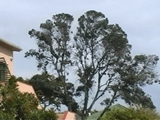PHOWN summaries and recordsVirtual Museum View records in Virtual Museum formatCoverage map for all species Species totals, Nest stats per species and Observer totals Species summary , or General query Observer records, or View VM record Photo of the week, or PHOWN repeats, or PHOWN priorities |
PHOWN record summary
|
Enter new vm record to see a different record and hit 'Go'.
|
Species allocated by Coordinator: Record details entered by participant: (see all records here for this participant) Google map for this record (zoom in and switch to satellite view)
Best: Southern Masked Weaver - interesting nest lining used
Photos uploaded by observer

Large photos
803, Southern Masked Weaver Ploceus velatus (see species summary here)Record status ACCEPTED Vm 1916 [on-line data upload (2012-02-14): 13543] Species Southern Masked Weaver Observer(s) Fiford Graham Country, town, locus South Africa, Gauteng, Sandton,
2628AALocality My garden Latitude, longitude -26.1160629930948, 28.028998374939 [0 m accuracy] Date 2012/2/14 Notes When nest building activity first commenced in late July/August this year with this weaver colony in my garden there were only four nests in the fever tree and adjoining Anna thorn tree. There were two nests in a nearby pepper tree. Subsequently, the nests in the pepper tree seem to have been torn down and that nest builder seems to have migrated to join the fever/Anna tree group where there are now six nests evident and work just starting on a seventh. These strange migratory movements seem to be quite common with the weavers in our garden.
It's now late summer (February)and all the nests in the Fever Tree/Anna Tree have been torn down with only one nest remaining (pictured) which was probably built in late November/early December. There is very little activity at the nest but occasionally a lone male will visit it to inspect it. It appears that the breeding season for the weavers in our garden is now over and this nest will probably merely serve to maintain their nest-building interest until the breeding season starts again in earnest in Spring. Interestingly, the weavers in our garden have developed the habit of taking bits of the lavender bush growing in our garden and lining their nests with it to no doubt make their homes more fragrant. This, I believe, is quite a common practice among some weaver species.
Nest count 1 Nest site tree
To see this map with all other PHOWN records, click here. Note that the map on this page will load very slowly and probably will only work if you use Chrome as a browser.
History of repeat colony counts
Note: repeats from the same day are not shown.vm Species code Date Nests Notes 1916 803 14/2/2012 1 When nest building activity first commenced in late July/August this year with this weaver colony in my garden there were only four nests in the fever tree and adjoining Anna thorn tree. There were two nests in a nearby pepper tree. Subsequently, the nests in the pepper tree seem to have been torn down and that nest builder seems to have migrated to join the fever/Anna tree group where there are now six nests evident and work just starting on a seventh. These strange migratory movements seem to be quite common with the weavers in our garden.
It's now late summer (February)and all the nests in the Fever Tree/Anna Tree have been torn down with only one nest remaining (pictured) which was probably built in late November/early December. There is very little activity at the nest but occasionally a lone male will visit it to inspect it. It appears that the breeding season for the weavers in our garden is now over and this nest will probably merely serve to maintain their nest-building interest until the breeding season starts again in earnest in Spring. Interestingly, the weavers in our garden have developed the habit of taking bits of the lavender bush growing in our garden and lining their nests with it to no doubt make their homes more fragrant. This, I believe, is quite a common practice among some weaver species.

Vm 1916










